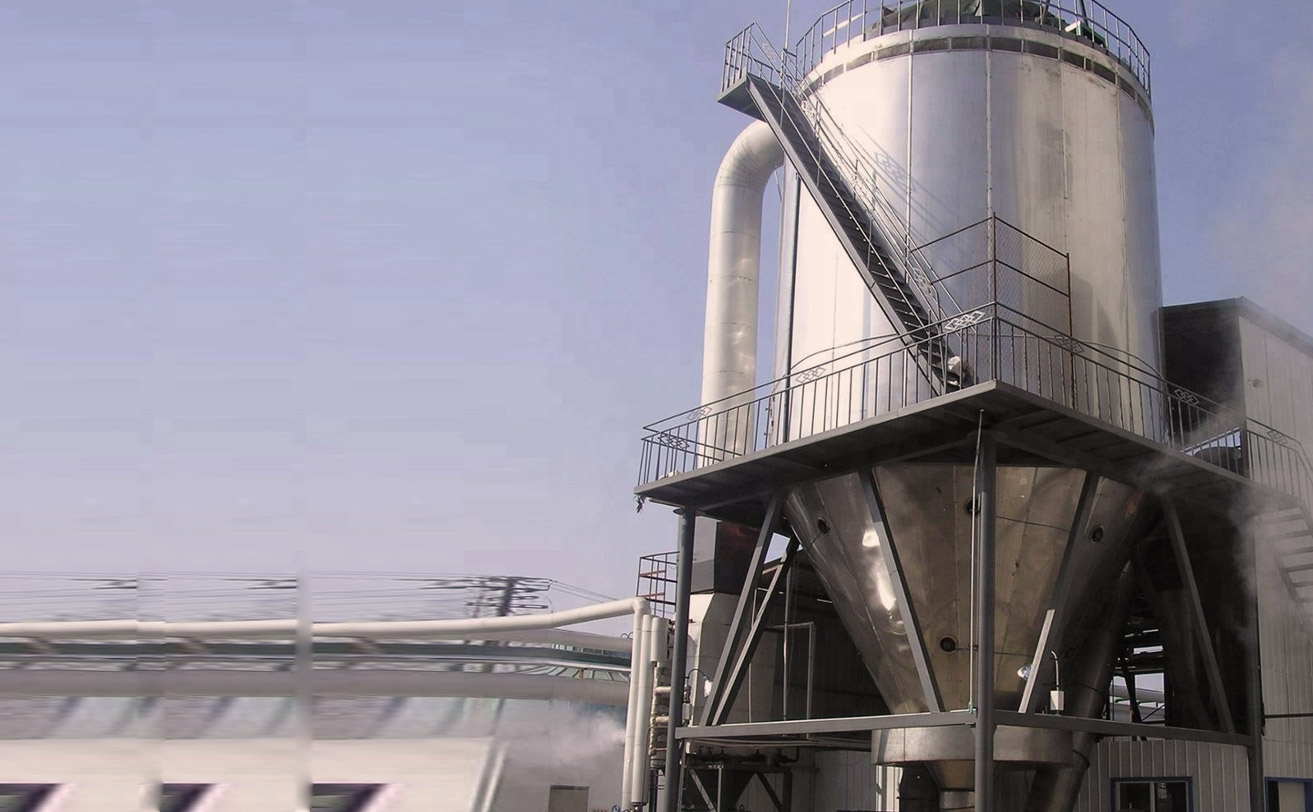Spray Dryer
Process
The spray dryer takes a liquid stream and separates the solute or suspension as a solid and the solvent into a vapour. The solid is collected into a drum through a cyclone. The liquid input stream is sprayed through a nozzle into a hot vapour stream and vaporized.

The feed solution is atomized in small droplets to reduce the surface tension through an atomizer and into the drying chamber. The kind of atomizer is decided based on the feed quality.

The droplet is then converted into a particle. This is crucial step is marked by 2 events: Spray-Air contact and Droplet drying step which provides an end sum result of dried substance.

Spray-Air contact is when hot air (heated through a furnace then filtered) with the spray from the atomizer. The current of the flow of feed and product is decided
Working principle

When the aerosol droplets come in contact with the heating medium within the chamber, they undergo evaporation and solute condensation.

Particle collection is done at the bottom of the dryer where there it is passed through a separation procedure before discharged.
This Is Why
We Should Use Spray Dryer
Top-Class Technology
Can handle a wide range of inlet feed materials due to a flexible atomizer design. This allows for a multi-industrial application ranging from pharmaceutical to ceramic powder production.
Flexibility
Flexibility in design for varying capacities. Can be made from Lab to production scale.
Consistent
Consistent end product providing a homogeneity. Micro to Nano particles can be obtained.

Highly Efficient
Can be used for both heat-resistant and heat-sensitive products.
Fully Automated
Continuous and fully automated process.
Robust solution
The construction of the material is very robust and can offer very long operational hours and lower maintenance costs.

